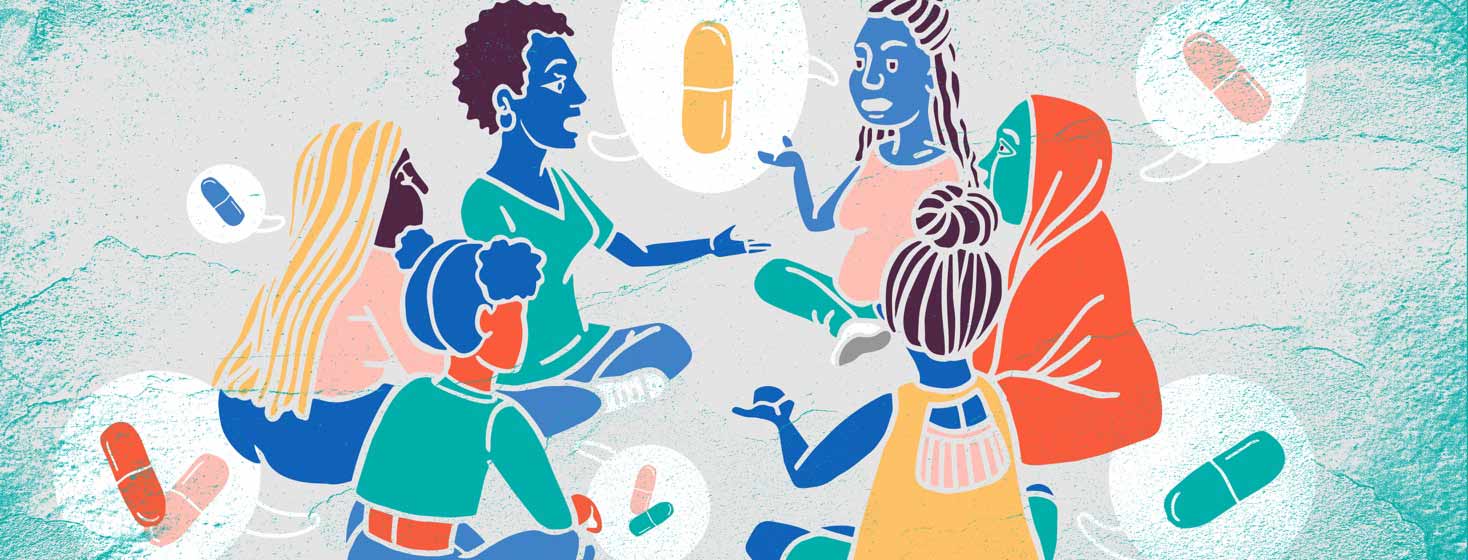PrEPing for Sisters
PrEP or pre-exposure prophylaxis has been out here for over seven years, I believe. It has been shown to reduce the transmission of HIV by more than ninety percent when taken as directed. However, most people don’t even know that it exists as an option.
Many groups can benefit from PrEP
PrEP is heavily marketed to men who have sex with men. However, very little research and marketing of PrEP has been targeted at female-identified populations. Anna Forbes, an HIV writer and activist, sums up the state of affairs this way:1
Even the pamphlet from the Centers for Disease Control and Prevention (CDC), called 'Talk To Your Doctor about PrEP' features a male couple on the cover—and no parallel version targeted to cisgender or transgender women, gender-nonconforming individuals, or straight couples seems to exist.
This fact is really alarming when studies show that these populations can benefit from the implementation of PrEP. The US Women and PrEP Working Group is working to make a change in how PrEP is researched, implemented, and marketed toward women.
Interested in sharing your story about PrEP?
Women, HIV, and PrEP
I recently wrote an article illuminating the need for PrEP to extend to sex workers and it showed me how little research is being done concerning this population. In 2013, the U.S. Women and PrEP Working Group responded to this lack of research by conducting their own informal interviews with 100 female-identified individuals across six different cities in the United States. The goal, not being scientific or statistical rigor, was to get a sense of common themes and perspectives from women on HIV and PrEP.
Unique concerns and considerations
The working group learned that most women did not know what PrEP for HIV prevention was at all. The concerns that women brought up were really unique. Aside from cost, access to medications, and side effects, these women were also concerned with coercion to take the medication by partners, difficulty negotiating condom usage with partners, and drug interactions with hormone therapies and recreational drugs.
Women are missing from PrEP messaging
When most respondents in a population don’t know about a particular medication, that means that the word is not getting out. Although efforts may have gotten better since 2013, the reality is that most women still are not considered in the marketing of PrEP especially among people that have some high-risk activities within their lifestyle.
The parallels of this lack of knowledge continue a legacy of female bias when it comes to sexual health topics. The female condom is one example of a tool that was meant to empower women to protect themselves. However, the commitment by the health community to engrain it in our cultural sexual education failed and it is always seen as an option that men and women don’t fully embrace.
PrEP is only useful if people know about it
Tools are great, but if they go unused they have little value to anyone. With the advent of new HIV tools, we should not miss the opportunity to re-evaluate how the implementation of these resources are distributed disproportionately. We, as community members, can spur change by pointing these inconsistencies out and insist on changes to these approaches that have left out vulnerable patients.
Can you relate? Join the discussion

Join the conversation